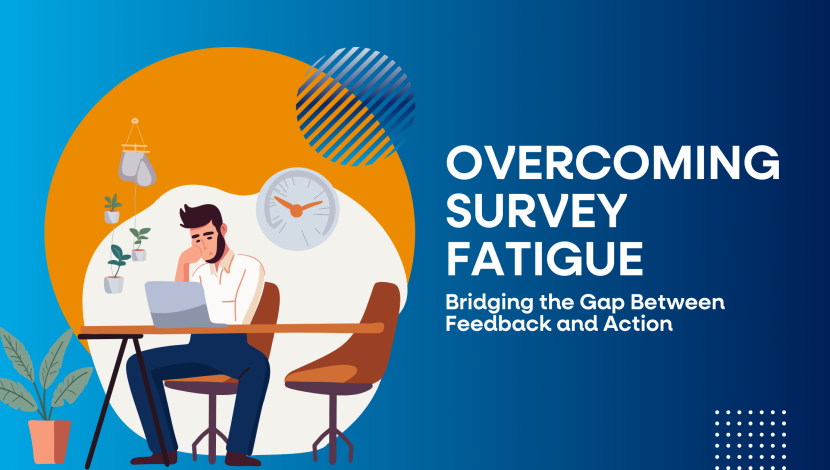Bridging the Gap Between Feedback and Action
Addressing Survey Fatigue: Closing the Feedback-Action Gap
In contemporary business, organizational, and institutional landscapes, surveys have assumed a pivotal role in shaping decision-making processes. They offer an invaluable mechanism for soliciting input from a diverse range of stakeholders, encompassing customers, employees, members, patients, distributors, and more. This engagement facilitates companies understanding their constituents’ experiences and requirements. Nonetheless, a burgeoning apprehension has surfaced – commonly referred to as survey fatigue. The issue extends beyond the temporal investment in survey participation and centers on the exasperation that arises when it appears that the feedback received does not result in meaningful action.
Survey Fatigue: A Growing Concern
Survey fatigue is a phenomenon that occurs when individuals, be they customers or employees, become overwhelmed by the number of surveys they’re asked to complete. It’s a problem that arises due to an excess of survey requests and a perceived lack of meaningful outcomes stemming from those surveys. In essence, it’s not the time investment that’s bothering people; it’s the feeling that their voices are not being heard or acted upon.
The Importance of Feedback
Feedback is a crucial component of any organization’s growth and success. Customers and employees provide insights that can help improve products, services, and internal processes. They can highlight what’s working well and what needs improvement. Yet, if the feedback is not taken seriously, it can lead to disengagement and apathy among those providing it.
Bridging the Gap Between Feedback and Action
To combat survey fatigue and maximize the value of feedback, organizations must bridge the gap between what’s collected and what’s done with the information. Here are some strategies to consider:
- Prioritize Transparency: Be clear with your survey respondents about the purpose of the survey and the steps you plan to take based on the feedback. When people understand the connection between their input and actions, they’re more likely to engage positively.
- Act on Insights: The most critical aspect of bridging the gap is acting on the insights gathered. Use the feedback to make meaningful improvements, and when possible, communicate the changes made as a direct result of the survey responses.
- Establish a Feedback Loop: A feedback loop is essential for ongoing engagement. Let your customers or employees know how their input has influenced decisions and show that their voices have a real impact on the organization.
- Segment Surveys: Don’t inundate your audience with endless surveys. Prioritize your surveys based on importance and relevance. This ensures that you’re not asking too much of your audience while still gathering necessary information.
- Incentivize Participation: Consider offering incentives to encourage survey participation. Whether it’s a discount, a gift card, or other benefits, it can motivate people to provide their valuable input.
- Regularly Review Survey Practices: Continuously assess your survey practices to ensure they align with your organization’s goals and customer/employee needs. Adjust as necessary to improve the overall experience.
Survey fatigue is a growing concern in a world where data collection is essential for decision-making. While the time invested in surveys might not be the main issue, the frustration often lies in the perceived lack of action taken in response to feedback. To overcome survey fatigue and make the most of the feedback received, organizations need to prioritize transparency, act on insights, establish feedback loops, and streamline their survey practices. By doing so, they can ensure that their customers and employees remain engaged and feel that their voices are heard and valued, ultimately leading to more effective decision-making and long-term success.


